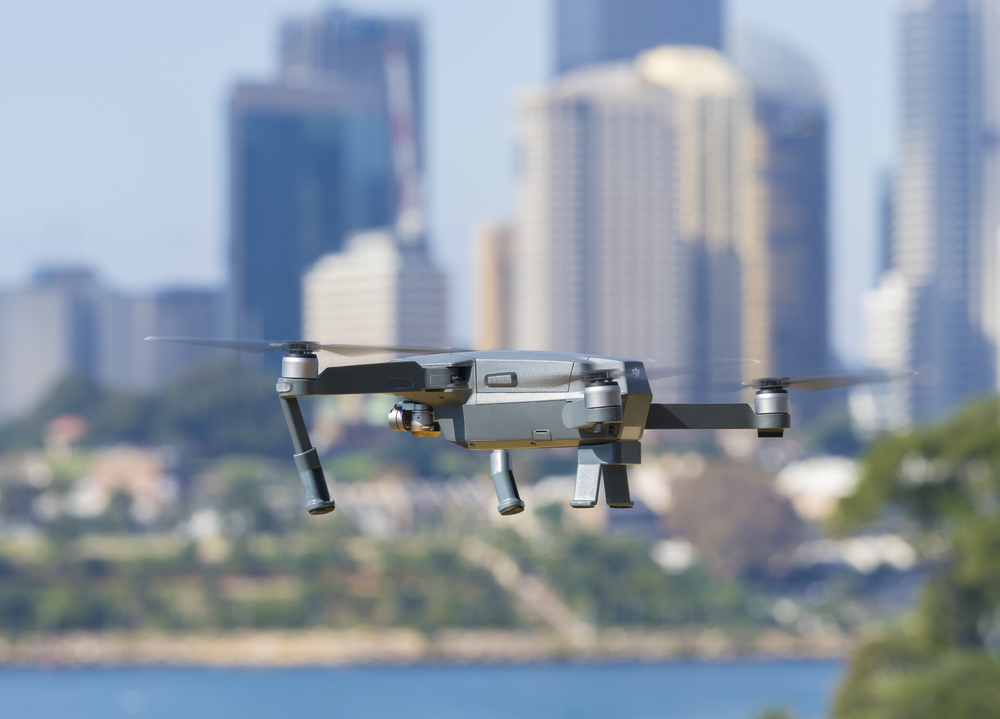
Paola Olivares, Director of “Drones & Advanced Air Mobility” Observatory
Sveva Gallo, Research analyst of “Drones & Advanced Air Mobility” Observatory
The mobility of the future concerns us more and more closely. Road traffic congestion and increasing pollution create an urgent need to identify alternative and more sustainable means of transportation. This is exactly why some major cities worldwide are planning an alternative mobility to help decongest urban traffic and reduce environmental pollution. Innovating on the mobility side, moreover, would promote an acceleration of the evolution of cities into smart cities.
Urban aerial drone transportation, also known as Advanced Air Mobility, enables the pursuit of these goals. It is necessary, for its realization, to ensure high safety standards and to overcome people’s physiological resistance to alternative modes of transportation. Clear regulations, adequate infrastructure and flight operations management tools are essential requirements, independently from the object of transport: goods, people, or medical supplies.
The object of transportation, however, seems to make a difference in terms of social acceptance. Advanced Air Mobility is constituted by two segments: Urban Air Mobility (UAM), focused on passenger transportation and Urban Air Delivery (UAD), focused on goods transportation. While the first one represents only 7% of the 205 application cases surveyed at the international level by the Drones Observatory of Politecnico di Milano, the second one accounts for 93%, testifying that UAM projects require particularly high standards of safety because of the higher scepticism.
Drone transportation of medicines and medical supplies is the one considered most useful, most probably because during the Covid-19 pandemic drones were used for large-scale distribution of vaccines, swabs and masks, making Urban Air Delivery a timely response to the state of emergency. The pandemic has surely prompted a re-evaluation of traditional transportation solutions, shifting attention to drone technology and its potential for exploitation, especially in healthcare logistics. For example, in 2021 in Canada a drone delivered a lung for transplantation between Toronto Western Hospital and Toronto General Hospital just in six minutes. This project, developed by Unither Bioelectronics, was made possible after 18 months of experimentation in which a special aircraft was equipped with a carbon-fiber container designed specifically to preserve and transport organs and other types of medical supplies.
The United States plays a leading role globally in both the UAM and UAD segments due to the amount of investments dedicated to the development of this market and the number of companies pioneering experimentations (e.g. Amazon, Wing and Matternet made their first flights in 2016). The famous US retailer Walmart has designed the platform “Walmart GoLocal” to enable small-town stores to schedule deliveries via drones and/or other autonomous vehicles. Each time a customer makes an order at one of the stores affiliated with the platform, Walmart – depending on the agreement with the retailer and the fastest and safest method of reaching the destination address – will arrange delivery of products by drones, thanks to the support of technology partner DroneUp, or by car. Currently, Walmart’s plan is to extend drone delivery services to as many as six U.S. states by this year and, through DroneUp, to employ a team of pilots certified by the Federal Aviation Administration (FAA)[1].
With regard to UAM, the first public test flight with passengers was completed by the German company Volocopter in 2021 at Gimpo International Airport in Seoul, South Korea. The 5-minute test covered a distance of about 3 km, reaching a maximum altitude of 50 meters and a maximum speed of 45 km/h[2]. In addition, Volocopter was the first to obtain an EASA certification in June 2021 after several pilot tests conducted in European and extra-European cities (e.g. Stuttgart, Helsinki, Singapore).
Also Italy is moving as a pioneer thanks to the National Strategic Plan 2021-2030 published by ENAC in September 2021 in order to foster the development of new concepts of sustainable mobility. To this end, the city of Rome plans to offer drone passenger transport services during the upcoming Jubilee 2024 thanks to Volocopter-branded drone-taxis, that carried out its first flight test at Fiumicino Airport on October 6, decreeing the activation of Italy’s first vertiport, thanks to the synergy work between Aeroporti di Roma, Volocopter, Urban V and Atlantia[3]; while the Lombardy Region is planning to use drones to transport goods necessary for the preparation of the 2026 Milano-Cortina Winter Olympics. The use of these electric aircraft will reduce traffic and allow important benefits in terms of environmental impact[4].
Drone transportation is one of the most interesting application areas at the international level[5] (nearly 30% of the 755 cases surveyed by the Observatory from 2019 to 2021), but this industry will need to overcome many challenges and hindering factors in the future. The most important ones to watch out for are developing industry regulations (certifications, safety, privacy, etc.), enhancing social acceptance, solving the problem of noise generated by drones take-off and landing, planning infrastructures that can make cities receptive to this technology, developing 5G connectivity to exponentially increase the number of applications, reducing operating costs, which are still too high to justify the replacement of traditional technology.
In a word, while at the regulatory level it is important to define less stringent requirements and faster authorization processes to promote experimentation and operational sustainability, at the technological level it is necessary to increase battery autonomy, develop advanced systems for integrating drones into the traditional airspace and equip this technology with Artificial intelligence for processing the collected data. Technological advancement, combined with more frequent experimentation, is the path to follow to embrace all the benefits that drones can offer.
[1] https://corporate.walmart.com/newsroom/2022/05/24/were-bringing-the-convenience-of-drone-delivery-to-4-million-u-s-households-in-partnership-with-droneup
[2] https://www.volocopter.com/newsroom/volocopter-conducts-south-koreas-first-crewed-airtaxi-test-flight/
[3] https://dronespectremag.com/inaugurato-a-fiumicino-il-primo-vertiporto-ditalia/
[4] Olimpiadi 2026: pronti i droni per trasportare merci | Drone Blog News
[5] In first place appear the use of drones for inspections and for security and surveillance.
(Image:Shutterstock)



